No food tastes quite as amazing as food that you grow yourself in your own garden. Whether you’re growing a large garden plot full of vegetables or a couple of small containers of herbs, there’s something magical about growing your own food and herbs. And, of course, kids can help out and learn to appreciate the joy of gardening as well. Today, Lauren Cain, Texas homeschooling mom of three, is here sharing her family’s experience with starting and growing an outdoor herb garden. She’ll walk you through the process of prepping your soil, choosing your plants, and how to get the kids involved in the whole process. Happy gardening!
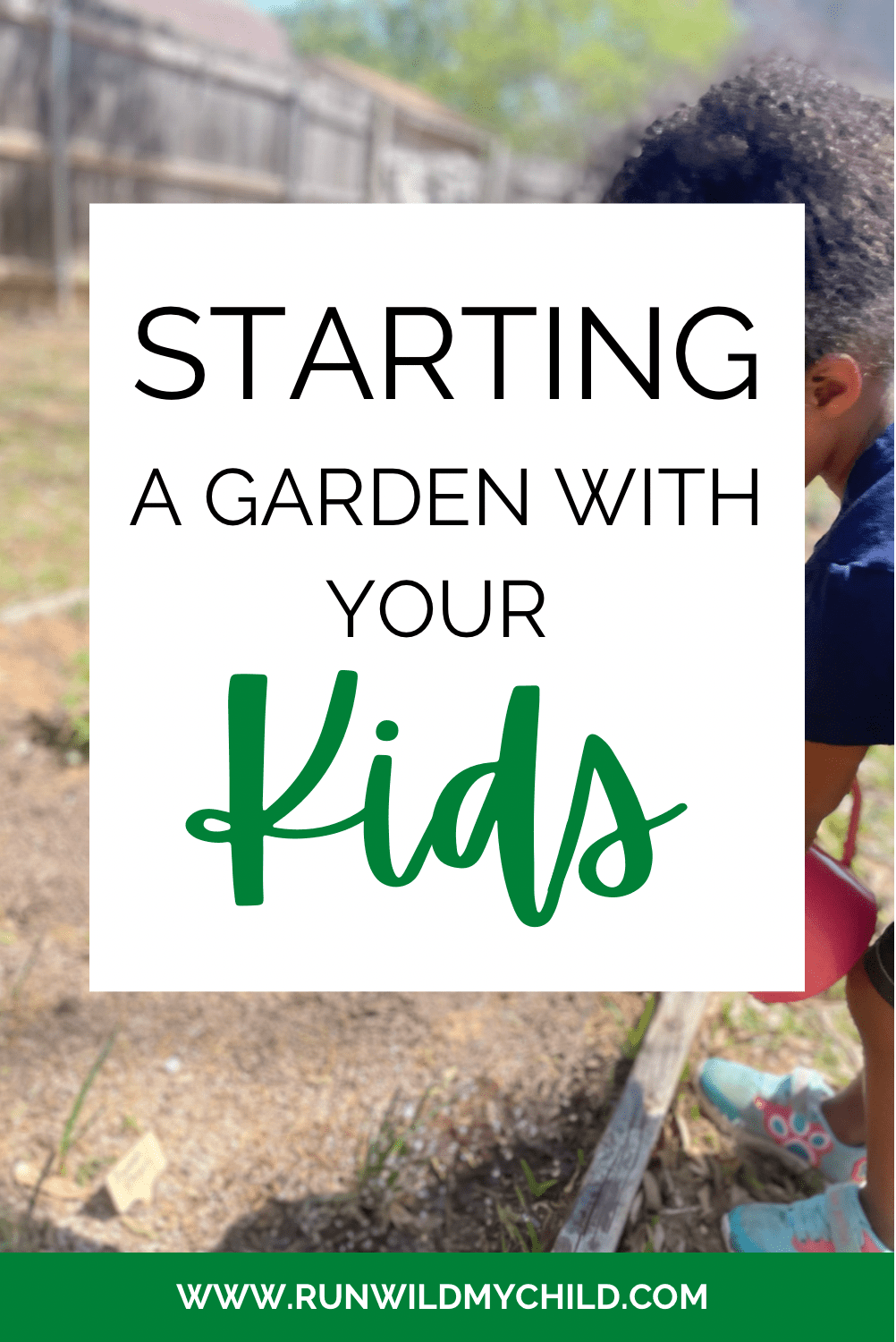
Growing herbs with kids
There’s something about spring that seems to give even the brownest of thumbs the urge to put a seed in the earth and watch it slowly flourish. I am one of those brown thumbs, both literally and figuratively, who has attempted repeatedly to plant herbs and vegetables only for them to reach their inevitable untimely death weeks later. But this year is different! We’re determined to start and grow an herb garden!
Kids are intrigued by planting seeds. But, because the process of getting to the finished plant can be a long one, kids’ interest wanes fairly quickly. The difficult part for me, and so many would-be gardeners, has always been that my seedlings could never really get far beyond the sprouting phase. So, this year I decided to try something new. Today, I am going to show you the easiest way, in my opinion, to start a garden with your kids that will immediately garner their excitement. I will also share what I have learned through this process which has allowed our garden to flourish and reap a harvest.
Start with plants
I wholeheartedly believe that our garden’s success is largely due to the fact that we did not start it with seeds this year. As I mentioned earlier, our previous attempts growing an herb garden from seeds never made it past the sprouting phase. Some of you may have had more luck than us with seeds, but if you want to guarantee that your plants will at least get the “plant” stage, skip the seeds.
This year, instead of purchasing seeds, I visited our local Home Depot to purchase a variety of vegetables, herbs, and fruit plants that were already growing strong. I felt confident because the plants at the store were already eons ahead of any of the seeds that I’ve ever planted! They had roots and strong stems and leaves, oh my!
My kids were also ecstatic because they were looking at live plants from the beginning and not simply seeds covered by dirt. You can get your kids involved even at this stage by having them choose the plants they want to grow. After all, it is their garden as well. We settled on tomatoes, bell pepper, squash, cucumber, strawberries, sweet onions, sage, mint, rosemary, chives, fennel, thyme, and basil. While transplants are notorious for being more expensive than a packet of seeds, there are a lot of benefits to using them. The benefits of planting transplants are:
- They mature sooner than if you had planted seeds, which means an earlier harvest.
- They save time and are ready to go into the soil immediately.
- The transplanted plants have stronger root systems which make them less vulnerable to weather conditions.
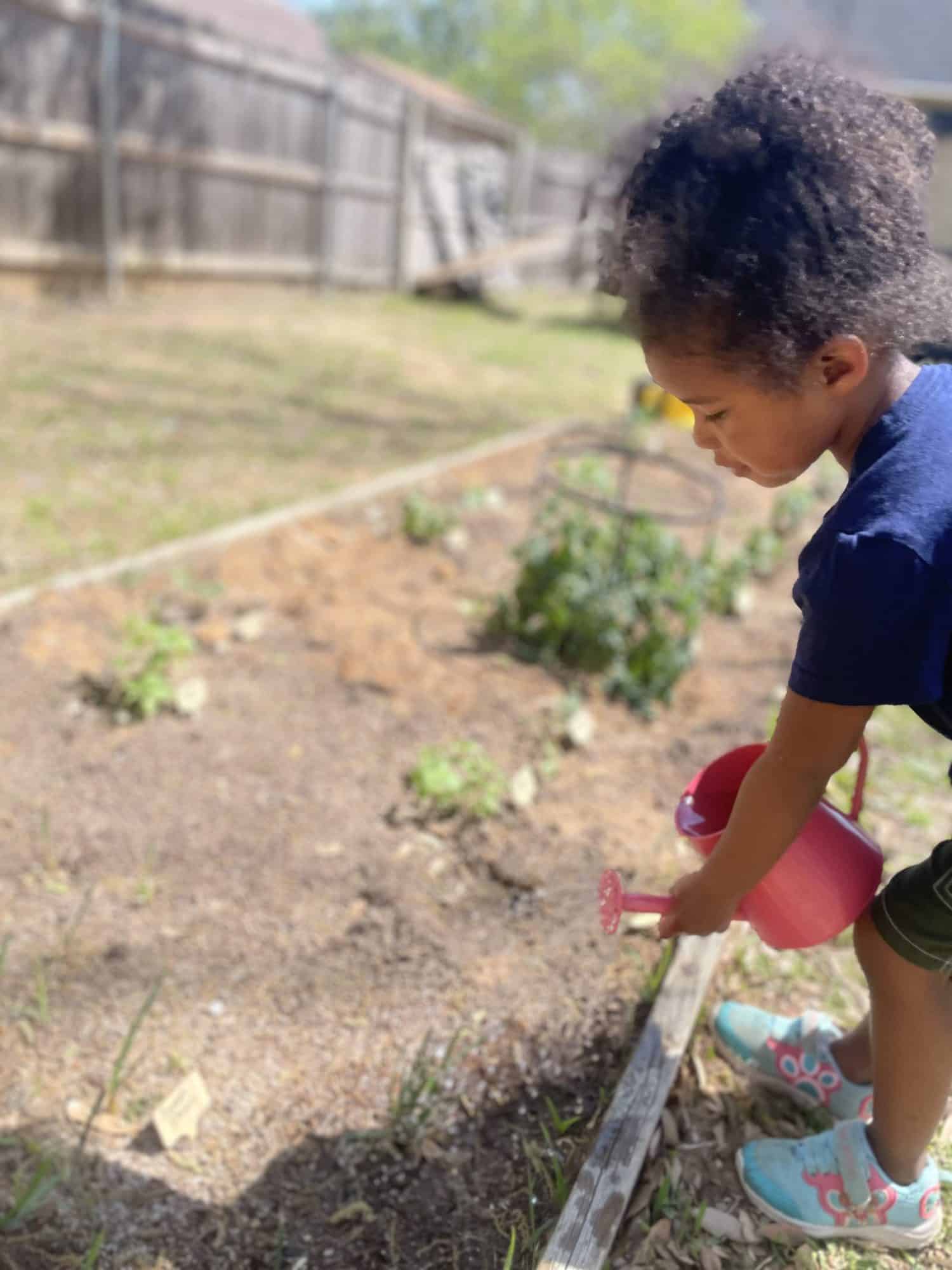
Choose your plants wisely
When choosing which plants to have in your garden, I would highly suggest researching plant compatibility. Basically, you need to make sure that your plants will be friends and not foes to each other. This was something that I almost learned the hard way when I planted 2 mint plants smack dab in the middle of my garden bed. If you’re a newbie gardener, you’re probably thinking, “what’s the big deal?” Well, mint is an aggressive plant that has the power to take over your garden completely. Yikes! Luckily, I was made aware of my mistake and quickly replanted the mint in a pot before its roots had a chance to take hold.
While you might not want mint in your garden bed, there are other plants that are highly compatible and beneficial when planted next to each other. For example, if you are planting tomatoes, you should also plant basil nearby. Basil repels insects that can harm tomato plants and can also improve yield.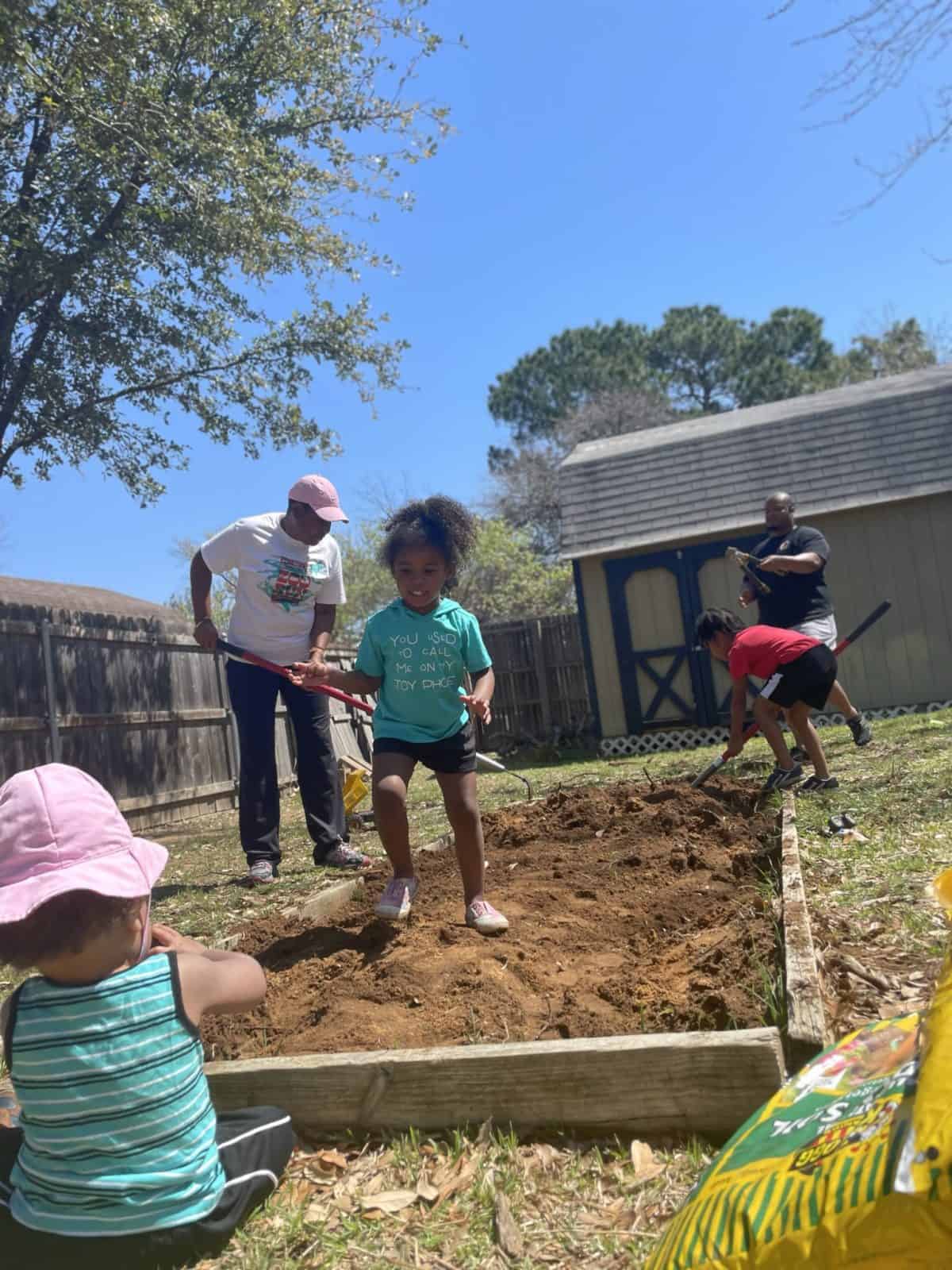
Get the kids involved
My kids were happy to see the live plants, but even more so at the fact that it meant we were going to be elbow-deep in dirt! We inherited a semi-raised bed in our backyard from previous owners, but it was in serious need of some TLC. So, armed with shovels and garden forks, my kids, husband, mom, and I got to work making the soil perfect for our new transplants.
The great thing about gardening is that it is an incredible learning opportunity for kids that is also really fun. My kids have been fascinated with the garden every step of the way. They were surprisingly excellent help with prepping the soil and especially enjoyed helping to pull the weeds out of the garden bed.
Choosing the right containers
Keep in mind that your transplants will not necessarily have to be planted in the ground. If you’re tight on space or simply don’t want to plant in the ground, you could also use pots or large stand-alone raised garden beds. The majority of the plants in our garden are in the ground. However, some of our herbs are potted in containers, which we can move around to give them exactly what they need. A little bit of research on each plant to help you determine if it’s well-suited for containers or should be planted directly in the ground.
Prepping your garden and soil
When you’re ready to start planting, there are a few things that you’ll need to have on hand and few things to do to your soil to ensure your plants have the best growing environment. Here are some things that you will need to get started on the right foot:
- Shovel
- Garden fork (if you are planting in the ground, this will help to turn over the soil)
- Garden soil (not just for potted plants; we added bags of soil to our garden bed for enrichment)
- Hose or watering cans
- Fertilizer (optional)
These items can be purchased at your local nursery or hardware store. I also found a great selection of smaller gardening tools for my kids at DollarTree. The first step was tilling the dirt in the garden to break up all the hard-packed soil. Next, we added 6 large bags of potting soil to the existing dirt, to add additional nutrients and balance the composition of the soil. You can also add compost to your soil.
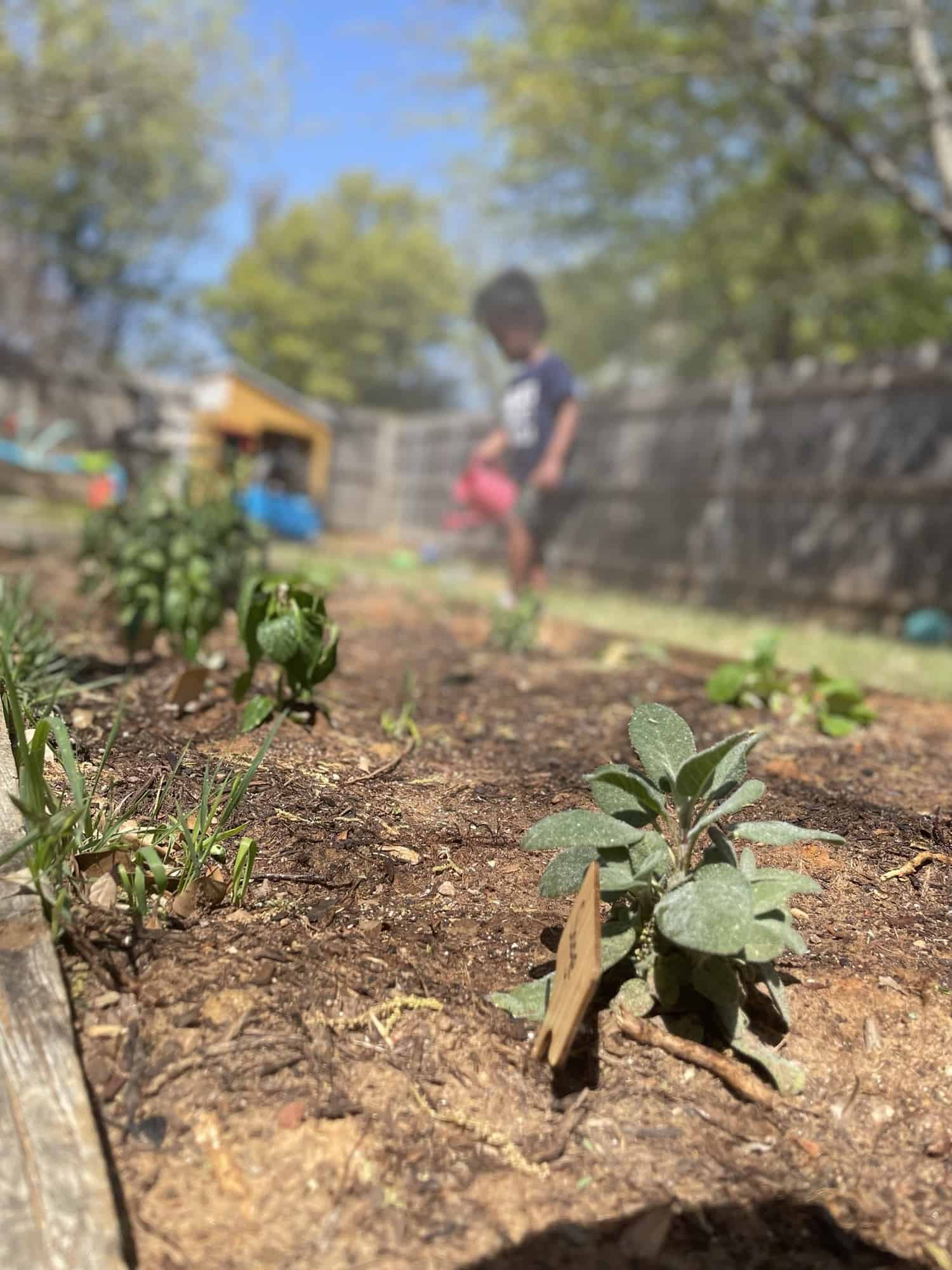
Gardening is a team sport
Once your soil is prepped, it’s time to figure out where each plant will go in the garden. The plant info should tell you how much space the plant will need, so you know how far apart to space out each plant to give it plenty of room to flourish without overtaking the nearby plants. Finally, you are ready to plant your transplants.
If there’s one thing that I have learned through this entire experience, is that gardening is a team effort. In planting our transplants, I thoroughly enjoyed working together with my 3-year-old and 5-year-old as we dug holes in the earth deep enough for our plants and gently covered the roots with dirt. It was a joy to see their independence and focus as they took ownership of their work. Don’t be afraid to get your kids involved with each step in this process. The great thing about transplants, is that they are strong. Even if they don’t seem to be “perfectly” planted, the roots will take hold. 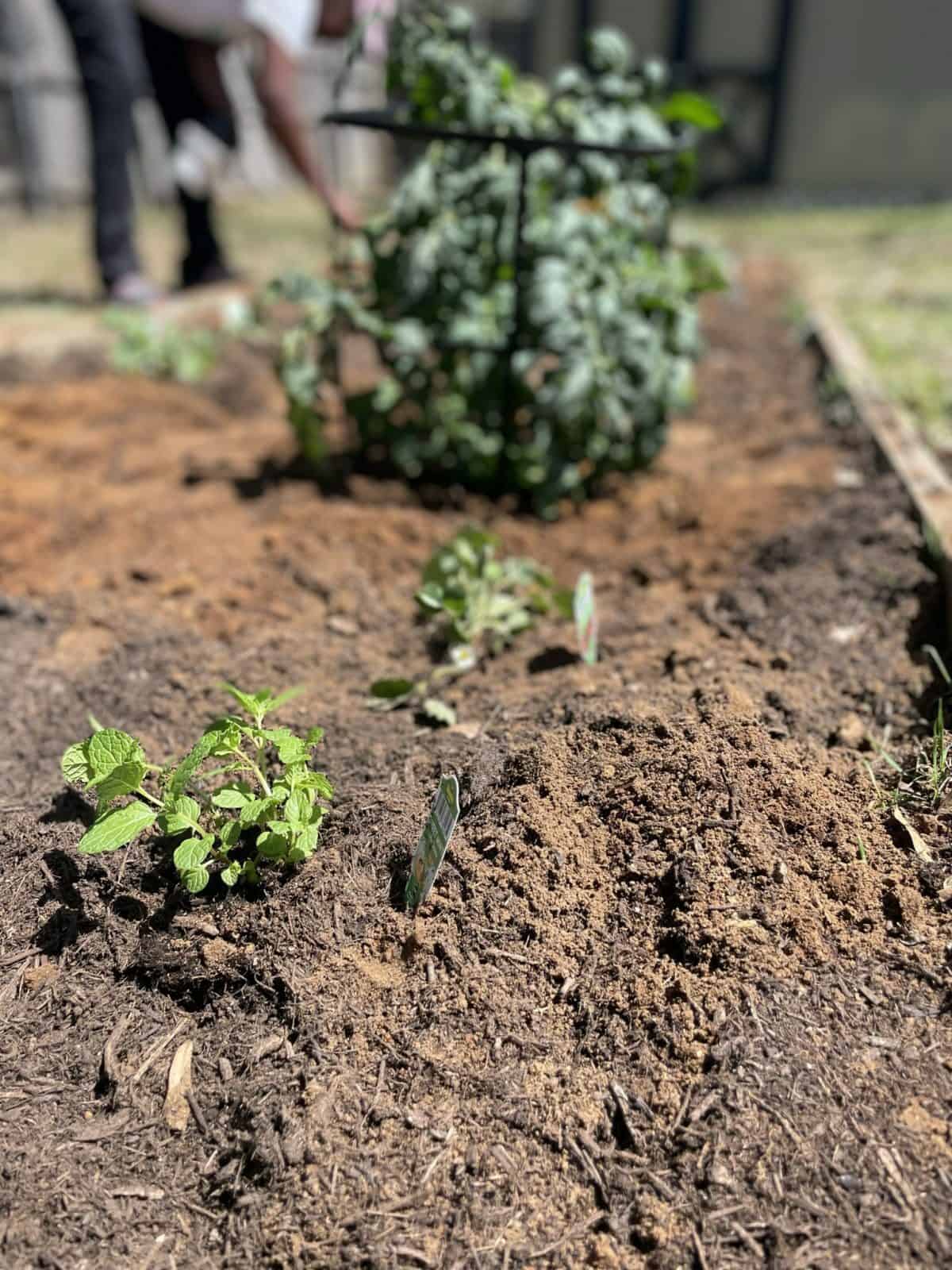
H2O and let it grow
After the transplants have been planted, the hard work is nearly over. Now you just have to maintain, feed, water, weed, and be patient. Be sure to research how much water your plants will need to ensure they not only stay alive but thrive. We have been watering our garden with tap water from the hose in the backyard, which has worked out fine. You could also gather and store rainwater for your garden, but that’s a whole other process and post.
I have learned that it is best to water your garden in the evening when temperatures are a bit cooler, rather than in the middle of the day. Watering our garden is an activity that can be handed off almost completely to your children (if they enjoy it). My kids love getting the hose and watering cans out and taking care of the garden each evening. We also take some time to discuss the changes that can be seen happening right before our eyes! It’s so much fun to see them notice the plants getting bigger each day and being observant of how their efforts are paying off.
Herb garden maintenance
Watering will likely not be all that you need to do to keep your garden healthy. Most edible plants will need to be pruned or trimmed. This is done to increase growth and yield, and it is necessary for the overall wellness of the plant. Depending on the transplants that you have, you will need to research how to prune your plant properly. You may also need/choose to fertilize your plants. Adding some plant food to your soil will help the plants get the nutrients they need to grow bigger and heartier.
Harvesting your garden
Since we did not plant our herb garden from seed, we were able to reap a harvest much sooner than we would have otherwise. In just over three months, we’ve already harvested herbs, tomatoes, and a lone strawberry. Our squash should be ready any day now, and we cannot wait.
Each time we are able to harvest, no matter how small, it brightens our day. It is awesome for kids because they are able to see the finished product of their work and patience. They are able to see food that they would normally only get at the grocery store growing right in front of them. It gives them a feeling of pride and accomplishment.
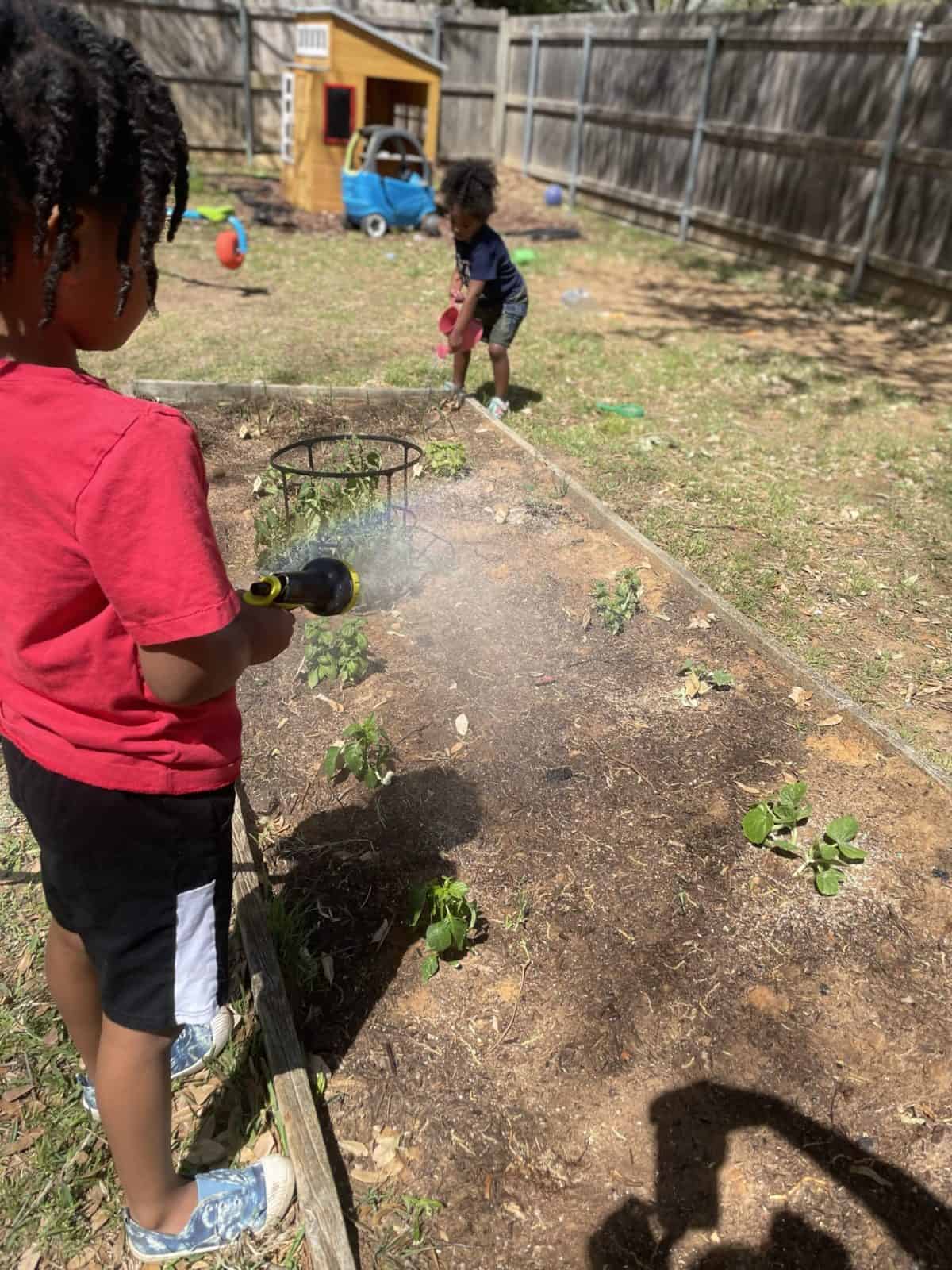
Gardening with kids resources
Starting and growing an herb garden with your kids is an amazing opportunity for learning and connection. If you have been apprehensive about starting a garden (especially with children), I hope that you have learned a few things from this post and that I have encouraged you to go for it. If you’d like more info on gardening with kids, here are a few of our favorite gardening posts:
- How to make gardening fun for kids
- 5 easy vegetables to grow with kids
- Tips for fall gardening with kids
- Winter garden planning
- Kid-friendly snacks from the garden
- How to plant a butterfly garden
Are you planting an herb garden with your kids this year?
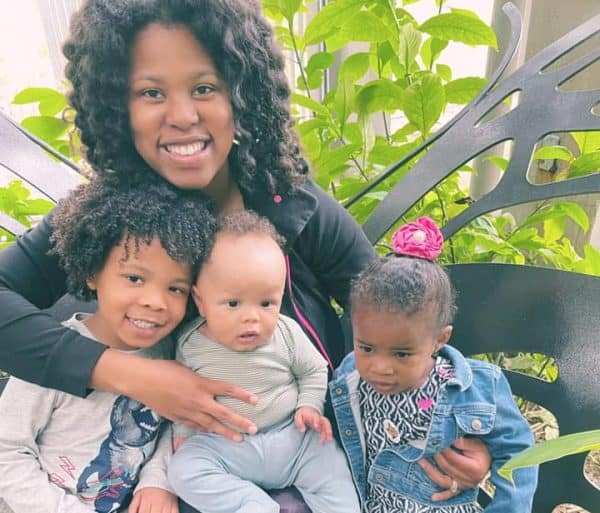
About the author
Lauren is a California native turned Texan, who loves to get out in nature and discover hidden gems all around the Dallas/Fort Worth area. She is a wife and homeschooling mama to three kids who definitely keep her on her toes. She truly believes in the value of homeschooling and that there are learning opportunities available all around us. In addition to homeschooling, Lauren is also an entrepreneur; she’s the co-owner of Crunchy Boutique (a natural-living/eco-friendly boutique).
You can find more from Lauren in the following places:
Instagram: @crunchymamadfw
Facebook: @crunchymamadfw
RWMC Posts: Lauren Cain







